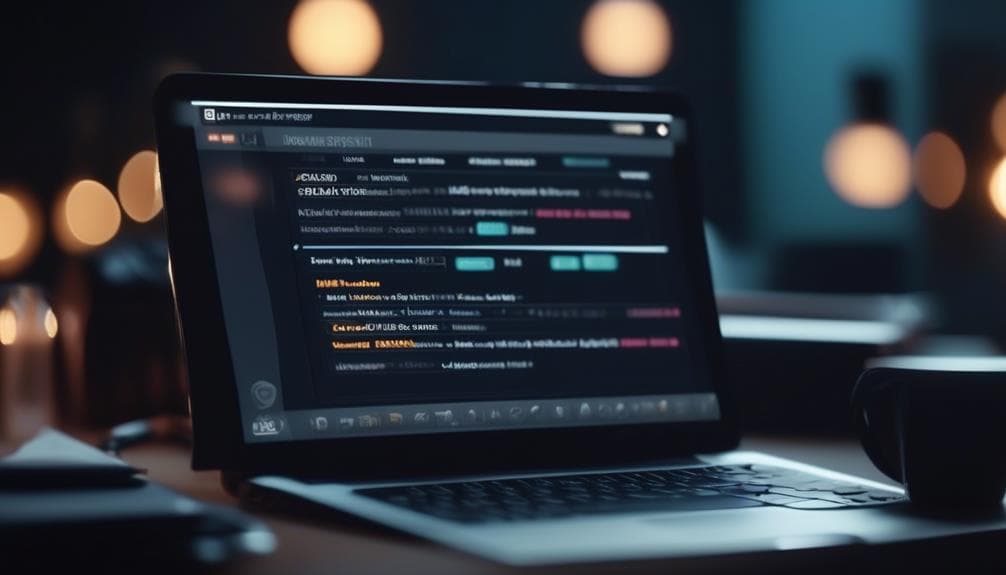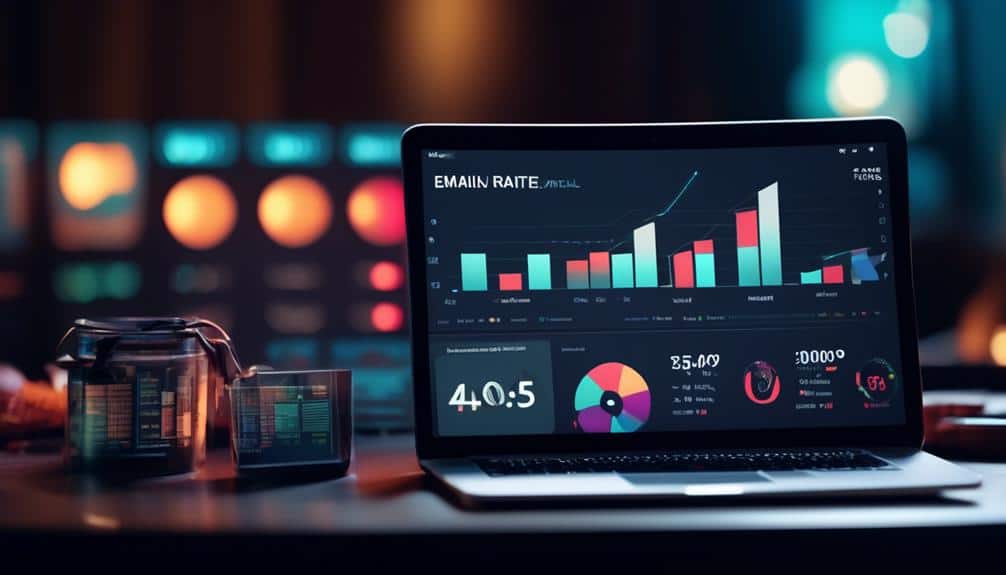Transform Your Email Strategy With Effective Management of Unsubscribe Requests
Have you ever wondered if effectively managing unsubscribe requests could transform your email strategy?
It's a theory worth exploring. Unsubscribes can be seen as a negative aspect of email marketing, but they also provide valuable insights into what your subscribers want and how you can improve your communication.
By understanding the impact of unsubscribe requests and analyzing the reasons behind them, you can implement best practices that not only reduce unsubscribe rates but also enhance engagement with your subscribers.
So, what are these best practices and how can you measure and improve the effectiveness of your email strategy? Stay tuned to discover the answers and take your email marketing to the next level.
Key Takeaways
- Unsubscribe requests provide valuable insights into subscribers' preferences and expectations.
- Analyzing unsubscribe reasons helps improve email strategy and audience service.
- Personalization strategies increase subscriber engagement and retention.
- Continuously testing and refining email strategy ensures valuable content delivery.
Understanding the Impact of Unsubscribe Requests

Understanding the impact of unsubscribe requests is crucial for effective email management. As an organization that desires to serve others, it's essential to manage email preferences in a way that retains email subscribers and keeps them engaged with your content.
When someone chooses to unsubscribe from your emails, it may feel like a setback. However, it's important to view it as an opportunity to improve your email strategy. By understanding the reasons behind these unsubscribe requests, you can make necessary adjustments to better meet the needs and expectations of your subscribers.
One way to manage unsubscribe requests effectively is by offering options for subscribers to update their email preferences. This allows them to tailor the content they receive, ensuring that they only receive information that's relevant and valuable to them. By providing this flexibility, you demonstrate that you respect their preferences and are committed to serving them in the best way possible.
Retaining email subscribers requires delivering quality content consistently. It's crucial to regularly assess the relevance and value of your emails to ensure that they align with the interests of your subscribers. By consistently providing valuable information, you can establish trust and keep your subscribers engaged, reducing the likelihood of them wanting to unsubscribe.
Analyzing the Reasons Behind Unsubscribes
To gain valuable insights into why subscribers choose to unsubscribe, it's essential to analyze the reasons behind these requests. By understanding the specific factors that lead to unsubscribes, you can improve your email strategy and better serve your audience.
One way to reduce unsubscribe rates is by improving email segmentation. By dividing your subscriber list into smaller, more targeted groups based on demographics, interests, or previous interactions, you can ensure that your emails are more relevant and engaging to each recipient. This personalization leads to higher open and click-through rates, ultimately reducing the likelihood of unsubscribes.
Additionally, personalizing email content can make a significant difference in subscriber retention. Sending personalized emails that address individuals by name and provide tailored content based on their preferences or past interactions can create a sense of connection and value. It shows that you understand and care about their needs, increasing their engagement and loyalty to your brand.
Analyzing the reasons behind unsubscribes allows you to identify patterns and trends that can inform your email strategy. By improving email segmentation and personalizing email content, you can address the specific needs and preferences of your audience, reducing unsubscribe rates and increasing the overall effectiveness of your email campaigns.
Implementing Best Practices for Handling Unsubscribe Requests

To effectively handle unsubscribe requests, it's important to implement best practices that prioritize the needs and preferences of your subscribers. By following these practices, you can ensure a smooth opt-out process and maintain compliance with unsubscribe regulations:
- Provide a clear and visible unsubscribe option: Make sure your subscribers can easily find the unsubscribe link in your emails. Place it at the top or bottom of the email, using a prominent font size and color.
- Simplify the opt-out process: When a subscriber clicks on the unsubscribe link, lead them to a simple and straightforward process. Avoid asking for unnecessary information and make sure it only takes a few clicks to complete the opt-out.
- Respect unsubscribe requests promptly: Once a subscriber has opted out, honor their request immediately. Remove them from your email list promptly to demonstrate your commitment to their preferences.
- Regularly update your unsubscribe list: Keep track of the subscribers who've opted out and regularly update your unsubscribe list. This will help you maintain compliance with unsubscribe regulations and avoid sending emails to those who've opted out.
Engaging Subscribers to Reduce Unsubscribe Rates
After implementing best practices for handling unsubscribe requests, the next step is to focus on engaging subscribers in order to reduce unsubscribe rates. Increasing retention is crucial for maintaining a strong subscriber base and ensuring the success of your email marketing strategy.
One effective way to engage subscribers is through personalization strategies. By tailoring your content to meet the specific needs and interests of each subscriber, you can make them feel valued and increase their likelihood of staying subscribed.
Start by collecting data on your subscribers' preferences, such as their demographics, purchase history, and browsing behavior. Use this information to segment your audience and create targeted email campaigns that resonate with each group. Personalize the subject lines and content to align with their interests, making them feel like the message was crafted just for them.
Additionally, consider implementing dynamic content in your emails. This allows you to show different content to different subscribers based on their preferences or behavior. For example, if a subscriber has previously shown interest in a particular product category, you can showcase related products in their emails.
Furthermore, don't forget to regularly analyze and optimize your email campaigns. Monitor the open and click-through rates of your emails to identify what content and strategies are resonating with your subscribers. Continuously test and refine your approach to ensure you're delivering the most valuable and engaging content.
Measuring and Improving Email Strategy Effectiveness

Improving the effectiveness of your email strategy requires measuring key metrics and implementing targeted improvements based on the data collected. To ensure your email campaigns are delivering the desired results, consider the following strategies:
- Email segmentation: Segmenting your email list allows you to send more personalized and relevant content to your subscribers. By dividing your audience into specific groups based on demographics, interests, or purchasing behavior, you can tailor your messages to meet their individual needs and preferences.
- A/B testing: Testing different elements of your email campaigns can help you determine what resonates best with your audience. By creating two versions of an email and testing variables such as subject lines, call-to-action buttons, or visuals, you can identify the most effective strategies for engaging your subscribers and driving conversions.
Frequently Asked Questions
How Can I Effectively Manage Unsubscribe Requests Without Negatively Impacting My Email Strategy?
To effectively manage unsubscribe requests without harming your email strategy, focus on providing engaging content that resonates with your audience. Use personalization strategies to tailor your emails, ensuring they are relevant and valuable to each recipient.
What Are Some Common Reasons Behind Unsubscribes That I Should Be Aware Of?
To reduce unsubscribe rates, be aware of common reasons behind unsubscribes. Understanding customer preferences, providing valuable content, and personalizing emails can help retain subscribers and improve your email strategy.
Are There Any Legal Requirements or Guidelines That I Should Follow When Handling Unsubscribe Requests?
When handling unsubscribe requests, it's important to follow legal requirements and best practices. Make sure you have a clear and easy-to-use unsubscribe process, honor opt-out requests promptly, and maintain a record of compliance.
How Can I Engage Subscribers to Reduce Unsubscribe Rates and Keep Them Interested in My Emails?
To engage subscribers and keep them interested in your emails, focus on creating compelling content that adds value to their lives. Personalize your messages, send targeted offers, and regularly analyze and optimize your email campaigns to increase open and click-through rates.
What Are Some Key Metrics or Tools I Can Use to Measure the Effectiveness of My Email Strategy and Identify Areas for Improvement?
To measure the effectiveness of your email strategy and find areas for improvement, use email engagement metrics like open rates and click-through rates. Additionally, employ email deliverability tools to ensure your emails are reaching the intended recipients.
Conclusion
In conclusion, effectively managing unsubscribe requests is crucial for transforming your email strategy.
By understanding the impact and analyzing the reasons behind unsubscribes, you can implement best practices to handle these requests.
Engaging subscribers and measuring the effectiveness of your email strategy will help reduce unsubscribe rates and improve overall success.
Don't underestimate the power of unsubscribe management in optimizing your email campaigns and promoting customer satisfaction.








